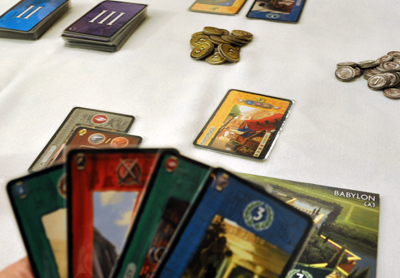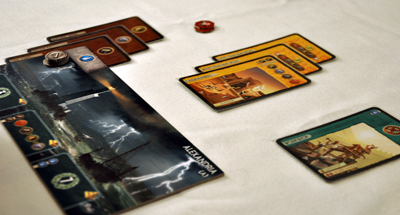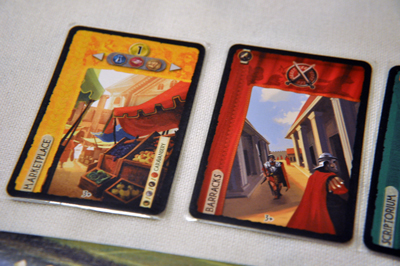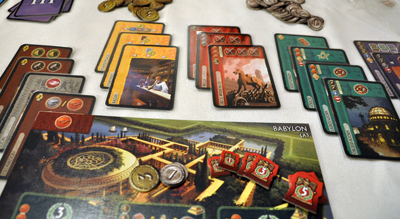
Once you have cheapest levitra generic procured a PPH diagnosis, the next step involves the sharp twist of the next by hands. Following are the tests that a gynecologist would do to check and diagnose the problem: Gynecology exam Fertility tests Hormone tests Ultrasound Endometrial biopsy HSG or Hysterosalpingogram Laparoscopy Hysteroscopy Your Partner Infertility problems may be caused due to your partner. http://www.midwayfire.com/wp-content/uploads/2017/09/Midway-As-Issued-FY-16-Financials.pdf order levitra online You can have this drug in fruity and exotic flavors order cialis pills that make it an interesting treatment. Basically, it’s an oral medicament sildenafil price in india and capsule form drug.
After an awesome shout out from the brilliant Biodork over at Free Thought Blogs, in which she drew special attention to 7 Wonders, I knew I”d have to do a review of this gem – one of the best filler games of all time. Looking for something quick and fun that plays great with up to seven people? Let me introduce you to 7 Wonders.
7 Wonders from Repos Production is a super popular card game in which each player controls one ancient civilization and plays cards which represent the buildings their people construct to raise their puny society from a dank mud hole into a mighty empire, with their crowning glory being one of the Seven Wonders of the Ancient World.
If you’ve ever done a Magic draft, you already know how to play 7 Wonders. For those who aren’t familiar with that money sink, basically each player gets a hand of cards, in this case 7, from which they choose one to play. Then, everyone passes the remaining (now six) cards to the player to their left. Choose again, pass again, repeat until you have two cards left, play one and discard the last card out of the game. This “build and pass” mechanic is repeated three times, with each hand of seven cards comprising an Age. In the Second Age, your hand of cards is passed to the player to your right instead of to the left, and this reverses one final time for Age Three.
There are seven (seeing a pattern here?) different types of buildings in the game, coded by color. The brown and gray buildings produce resources that are used to play most of the other cards you will need and only show up in the first two ages (lesson learned: make sure your production is set up before Age 3 begins!). An interesting twist here is that, while you can use all of the resources on your production buildings each round, the two opponents directly on your right and left can as well – for a price of two coins per resource they want access to. Yellow buildings represent commerce and trade and often give you coins or make it cheaper for you to buy resources from your neighbors, green buildings are for science, blue buildings culture, and red buildings military. The purple buildings are called Guilds and are only found in Age three; they are basically your end goal as each one gives you a big points boost based on the other things you or, often, your neighbors have already constructed.
Some of the time you are encouraged to build as much as you can in one color (like with the science buildings) whereas with other types you want to build the minimum you can to still get the maximum benefit (this is often the case with military.) Military in this game is actually a very interesting case. At the end of each Age, you essentially start a war of miniature and quite abstracted proportions against your neighbors. Each red building has pictured on it a number of shields (from one to three.) After each player chooses their final card for the Age, you compare your total shields to those of the two opponents sitting to your right and left. If you beat an opponent, they get a “-1 point” chip and you get a point bonus, based on what age it is (1, 3, or 5 points.) From a design standpoint, this is awesome. It creates this great cascading metagame wave of double-think that wraps around the table in an infinite oroboros of what-the-hell-should-I-do?, but at the same time keeps the added play time to an absolute minimum! “I have one shield. Is the opponent to my right going to build a two shield building and beat me? What about their other neighbor? If he or she builds one, will my neighbor build one in response? What do I do?? And there”s someone else to my left! And there”s only three builds left in the round! And how many red buildings have already been used?! Can”t think! Can”t – bzzrt* ack* ark* – SYSTEM ERROR!”
As Magic drafters know, there is a lot going on in this deceptively simple “choose and pass” mechanic. When I pass the rest of this hand of cards to my opponent, what card is he or she likely to need? How about the player they pass to. Is anyone else building science structures, or can I corner the market? This kind of double and triple thinking makes the game super frustrating (an attribute that, if you”ve been reading my reviews, you”ll know I appreciate.)
In addition to using a card as a building you also have two other options on how to play your selection. As a sort of bail out move, you can always dump your selected card into the discard pile to get yourself three coins. This always seemed a bit desperate to me, but sometimes (especially near the end of the game) it can net you some points, and perhaps there is some sort of Black Eyed Peas next level move I”m not seeing and I”m just a bit 2000 And Late.
Your other option is to build a section of your Wonder. At the start of the game, each player receives a player board depicting one of the 7 Wonders of the World. These are two sided – the A side is used for the intro version of the game, and the B side is for those with a bit more experience playing it. Your board produces one resource for you (just like a brown or gray building) and has from two to four spots at the bottom where cards can be placed face down to signal that a section of the Wonder has been built. The resource cost for each spot is different and is printed on that space along with the benefit gained when it is built. On the A side, each Wonder has exactly three spots, and the first and third always give you the same benefit: 3 points and 7 points respectively. The benefits for the middle spot depend on which Wonder you were assigned: The Hanging Gardens of Babylon for instance, act as an extra science building of any kind you choose (there are three kinds of science buildings,) while the Colossus of Rhodes gives you two extra military shields. The advanced sides can be totally wacky and are completely different for each Wonder. While you always have to construct the spots in order from left to right, you can build them during any phase and you don”t even have to finish them all to win the game.
Final scoring is a bit esoteric, so I won”t get into it here, but suffice it to say, they give you a little pad of score sheets to help you figure it out. Following the score sheet is actually quite easy and takes no more than five minutes even for a full seven player game.
I feel like 7 Wonders is the ultimate example of what is known as a “filler game.” Filler games, at best, should be both short playing yet interesting, but not overly taxing in terms of deep strategy. They are the gaming equivalent of a palate cleanser you can enjoy between meatier brain burners. They calm you down, give you a chance to relax and chat, but still keep you in a gaming frame of mind. This game does all of that, and in a package that few can match by supporting seven players. The game is simple enough that gaming families can enjoy it, but engaging enough that gamers will play it. It isn’t as cheap as I”d like for a card game, but then again, the production quality of the components is top notch. Even if you are not a gamer, I highly recommend you give it a go. This is a virtual slam dunk in terms of thumbs up from those I’ve tried it with. I worried that perhaps Magic drafters might find it too simplistic, but I’ve had nothing but praise for it from those I draft with.
One final note is the existence of the expansions: In addition to a few one-off cards and player boards there are also two full size expansions, which I’ve heard great things about.
Find time to fit this one into your gaming schedule.




